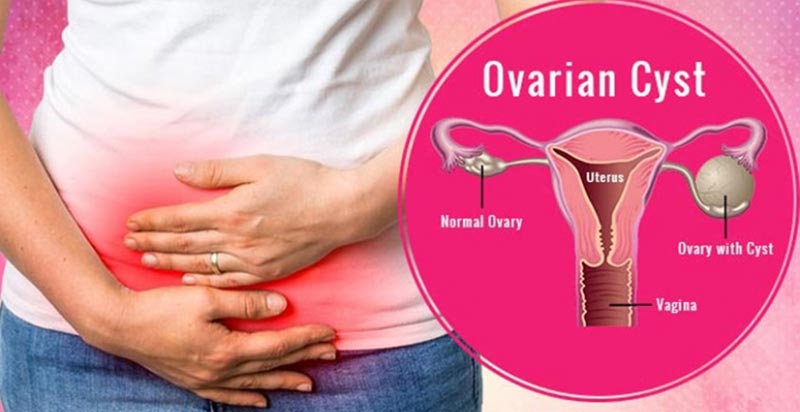What do Ovaries Appear Like?
Women are wearing a pair of ovaries. These are tiny, bean-shaped organs that play a crucial role in the reproduction of women. Each ovary is on one side of the uterus. The ovaries are accountable for releasing the egg roughly every 28 days as part of the menstrual cycle. They also release female sex hormones, estrogen, and progesterone, which play a significant role in female reproduction. Cysts may be found in both ovaries or may be noticeable in only one.
Symptoms of pelvic pain, nausea, bloating, and swelling of the abdomen can persist in massive cysts. Blocking the blood supply to the ovaries or rupturing can cause serious bleeding. Complexity clearing of the intestines or feeling full too fast or extremely painful periods is often seen in women with ovarian cysts.
Medical Diagnosis of the Ovarian Cyst. The Two Aspects of Ovary Cyst are:
Diagnosis of Ovarian Cysts
To find cysts in the ovaries, an ultrasound is done using a probe inserted inside your vagina. If a cyst is observed during an ultrasound scan, this will need to be tracked with a repeated ultrasound scan within a few weeks. Cysts can be as tiny as 3 mm or as wide as a melon. Simple cysts are thin-walled and carry only fluids, but complicated cysts contain dense fluids, blood, and solids. A basic cyst is a large follicle that has continued to develop after the egg has been released into the ovary. Whereas endometrioma cells are located outside the womb, they also cause ovarian cysts and are named endometriomas.
A dermoid cyst is produced from cells that create eggs in the ovaries and also include materials such as hair and fat. Treatment may not be necessary in the case of no symptoms. whereas if symptoms continue or the ultrasound has a large or complex cyst, one is directed to a gynecologist for further examination.
Treatment for Ovarian Cysts
Most of the time, the practitioner recommends no rush to extract the cyst, but if the cyst is growing wider or more complicated, surgery is suggested. Your decision focuses on the conditions, the presence, the duration, and the results of any blood tests. Details on options in your particular case, including information on the risks and benefits of each alternative, should be given to you.
Technically, a small cyst with a diameter of less than 5 cm might not be appropriate for care. Typically, these cysts dissolve gently after a few months. Whereas a small cyst measuring 5–7 cm in diameter needs an ultrasound every year to confirm no further rise. An easy cyst that reaches more than 7 cm in diameter for more studies, such as magnetic resonance imaging (MRI) and/or surgery. It is advisable to consult your gynecologist about potential surgical choices. Laparoscopy or laparotomy or hysterectomy shall be regarded by scale, number of cysts, and condition of the ovary or uterus.
In conclusion, do not worry when an ultrasound ovary cyst is detected, feel free to contact Paaranu Women’s Specialist in Surat, Gujarat. We hope that the content was informative, that you would kindly share it with your friends and colleagues, and please feel free to contact us for any queries and also share your valuable reviews with us.




